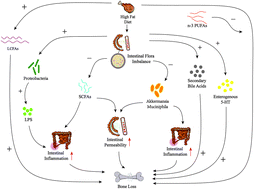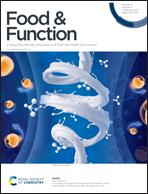The impact of a high fat diet on bones: potential mechanisms
Abstract
A high-fat diet (HFD) is defined as a diet that contains lipids that account for more than 30% of the total energy intake, and current research has documented cases with intakes as high as 45% and 60%. There is a view that patients who have a tendency to consume a HFD are more susceptible to various kinds of diseases, including osteoporosis, metabolic syndrome, coronary heart disease, and cancer. Thus, hypotheses have been proposed that a HFD may serve as a significant risk factor for bone loss and osteoporosis. A plethora of studies has suggested a relationship between a HFD and bone health. Moreover, high fat has a vital effect on the bone structure and bone health, and intestinal flora imbalances and intestine barrier deterioration, inflammation, oxidative stress, adipokine changes, and bone marrow fat tissue (BMFT) accumulation are thought to be potential mechanisms. Most research has demonstrated that a HFD diminishes bone mineral density and bone microstructure. Some studies, however, showed that a HFD contributes to achieving peak bone mass, which is associated with weight gain. As diet is modifiable, lifestyle changes and medication can help bone improvement, as well as alleviating bone loss associated with a HFD. This review aims to give a comprehensive understanding of the relationship between a HFD and bone health, which might provide strategies to improve bone health by varying daily dietary components and building a healthy lifestyle. We also hope that further treatments for diet-related bone loss can be put forward.

- This article is part of the themed collection: Recent Review Articles


 Please wait while we load your content...
Please wait while we load your content...